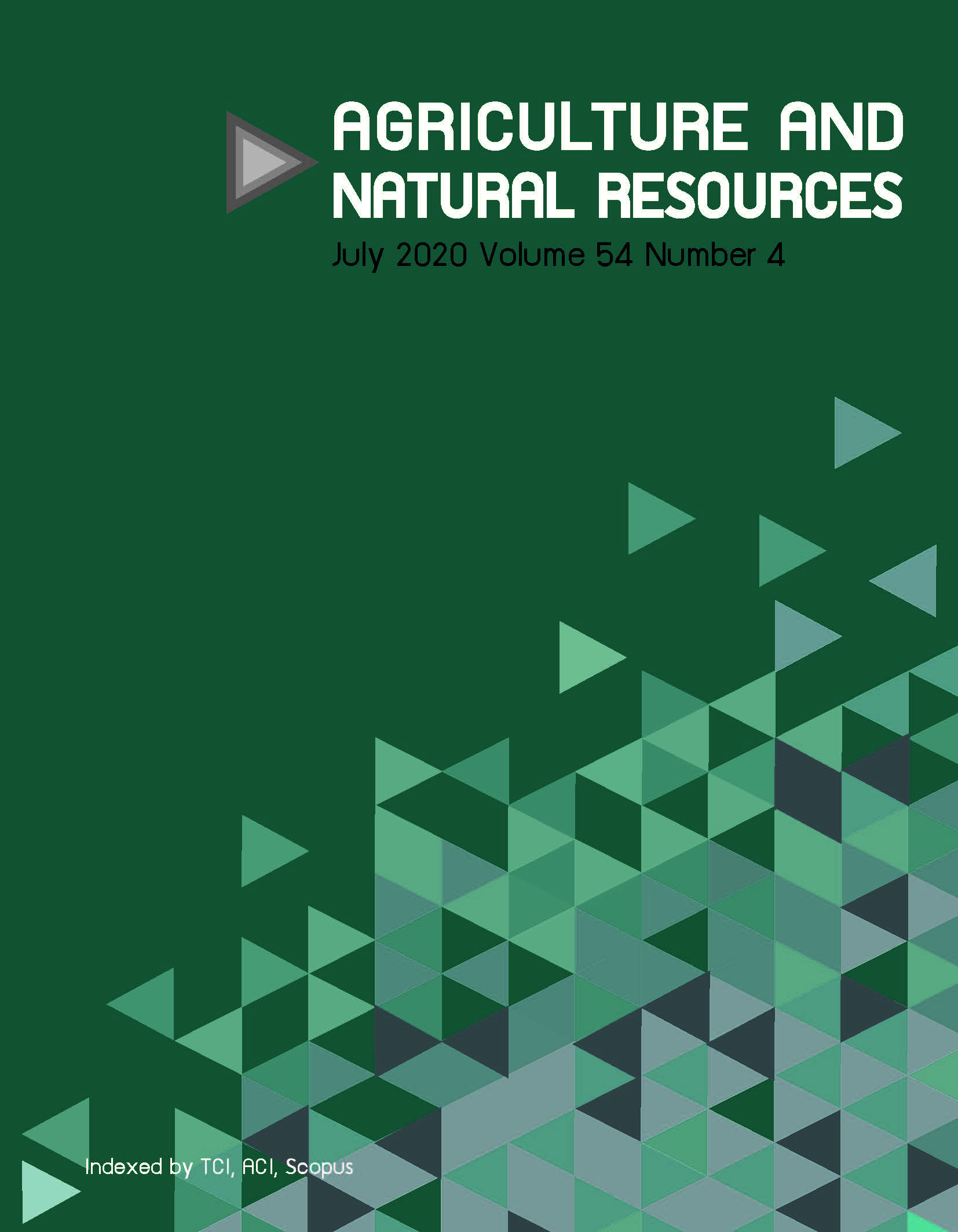Genetic variation of Heterorhabditis indica Poinar, Karunakar & David (Nematoda, Rhabditida) population in Thailand
Keywords:
Entomopathogenic nematode, Haplotype, Heterorhabditis, ThailandAbstract
Entomopathogenic nematodes (EPNs) in the genus Heterorhabditis are widely used to control many soil-borne insects. Thus, studies on the biodiversity of the local EPNs are needed to develop their suitable use in insect pest management programs. The phylogeny, base difference and haplotype network of the EPNs were investigated using morphology and a molecular technique to compare the genetic information on EPNs among regions in Thailand. In total, 27 isolates of EPNs were recovered from 221 soil samples collected from six regions of Thailand. All isolates of EPNs were identified as Heterorhabditis indica based on internal transcription spacer regions (98% identity) and morphological data. Within the 27 sequences, 28 polymorphic sites were defined to 13 distinct haplotypes of H. indica in Thailand and the percentage sequence divergence was in the range 0.12–2.12% (1–24 bp). The comparison of migration rate at 0–∞ nematodes per generation could distinguish among provinces from different regions of Thailand. The demographic history and the dispersal of the nematode population had a low frequency of mutation. The phylogenetic tree of nematode haplotype was monophyletic and separated into three clades. These results suggested that using the internal transcription spacer region would be successful in describing these EPNs in detail at the species level.
Downloads
Published
How to Cite
Issue
Section
License

This work is licensed under a Creative Commons Attribution-NonCommercial-NoDerivatives 4.0 International License.
online 2452-316X print 2468-1458/Copyright © 2022. This is an open access article under the CC BY-NC-ND license (http://creativecommons.org/licenses/by-nc-nd/4.0/),
production and hosting by Kasetsart University of Research and Development Institute on behalf of Kasetsart University.







